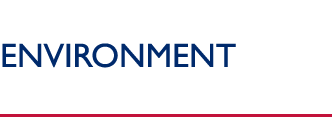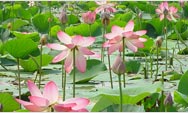Water Reuse as a Tool for Water Resources Management: USAID’s Recent Experience
Increasing demand for alternative water resources and increasingly stringent water quality discharge requirements are the two primary driving forces for using treated wastewater, or reclaimed water, to meet some of society’s water demands.
The use of reclaimed water is an essential component of Integrated Water Resources Management (IWRM) and sustainable development not only in dry and water-deficient areas, but in water-abundant regions as well. New water sources are increasingly more expensive to maintain, requiring high capture, conveyance, and pumping costs. Reclaimed water is often an economically viable alternative.
Public acceptance generally dictates that, in addition to irrigated agriculture, which is likely to continue to be the largest user, reclaimed water can be effectively used for environmental restoration, irrigation of green areas (parks, golf courses, sports fields), urban development (waterfalls, fountains, lakes), road cleaning, car washing, fire fighting, toilet flushing, and/or industrial uses, but not for potable water supplies.
Water reuse is increasingly becoming recognized as a viable water source in national strategies and plans, even in countries where water is relatively abundant. The planning, technical, institutional, and socio-economic setting in which water reuse is practiced varies from country to country.
Operational performance, sound institutional arrangements, conservative cost and reclaimed water sales estimates, and good public communication are fundamental to the success of any water reuse project. It can only realistically be promoted where investments in wastewater collection and treatment systems have already or are soon to be made.
The water reuse regulations adopted by a given country depend on that nation’s socioeconomic conditions. Most developed countries have established low-risk guidelines or standards based on a high technology/high-cost approach. Many developing countries have adopted an approach based on the World Health Organization’s (WHO) recommendations, which usually means lower technology levels and lower costs while addressing the health risk.
The distinction needs to be made among water reuse, the planned use of treated wastewater, and the unplanned use of inadequately treated wastewater, which presents major health and environmental risks. In many parts of the world, including many USAID-presence countries, the existing wastewater management systems do not allow for the development of water reuse. In such cases, alternative strategies, which seek to protect the health of the field workers and the public while preserving the livelihoods of those using the wastewater, need to be explored.
USAID/Jordan
Jordan is chronically short of water. Mobilization of non-conventional water resources is an essential component for meeting the increasing water demand of the growing population. Over 63 percent of the Jordanian population is connected to sewerage systems.
Around 10 percent of the total water demand is satisfied by either directly or indirectly reusing water in agriculture. Although direct reuse has been attempted in the immediate vicinity of the wastewater treatment plants, these sites are generally pilot projects with some research and of limited commercial viability. The government of Jordan, with support from USAID, is implementing direct water reuse activities that will be reliable, commercially viable, socially acceptable, environmentally sustainable, and safe. The program is focusing on three sites in Jordan — Wadi Musa, Aqaba, and Jordan University of Science and Technology — each of which is operating under a unique set of environmental, financial, and technical conditions. New projects in Amman and Aqaba will promote the use of treated wastewater for irrigation of urban landscaping.
USAID/Morocco
Under the USAID-funded Water Resources Sustainability (WRS) activity in Morocco, a 1,000-m3/day wastewater treatment plant and water reuse facility have been developed for the rapidly expanding town of Drarga, near Agadir in southern Morocco. Previously, the town had existing potable water supply and wastewater collection systems, but wastewater was discharged directly into the environment. The treatment process includes sand filters, de-nitrification, reed beds for final polishing, and storage before being pumped to adjacent privately owned irrigated lands. Public consultations were undertaken throughout the project cycle, which resulted in adjustments to the project and overall public acceptance. In addition, a steering committee of local stakeholders followed and supported the implementation process, and a technical oversight committee was formed to oversee the plant’s operation.
Cost recovery was integrated into the overall project, including sales of reclaimed water to the farmers, reeds harvested from the polishing ponds, and sludge and methane gas from the anaerobic basins to, respectively, produce compost and drive pumps at the plant.
Since October 2000, the treated wastewater has met WHO guidelines for reuse in agriculture without restriction. The project included drip irrigation demonstration plots.
Back to Top ^


